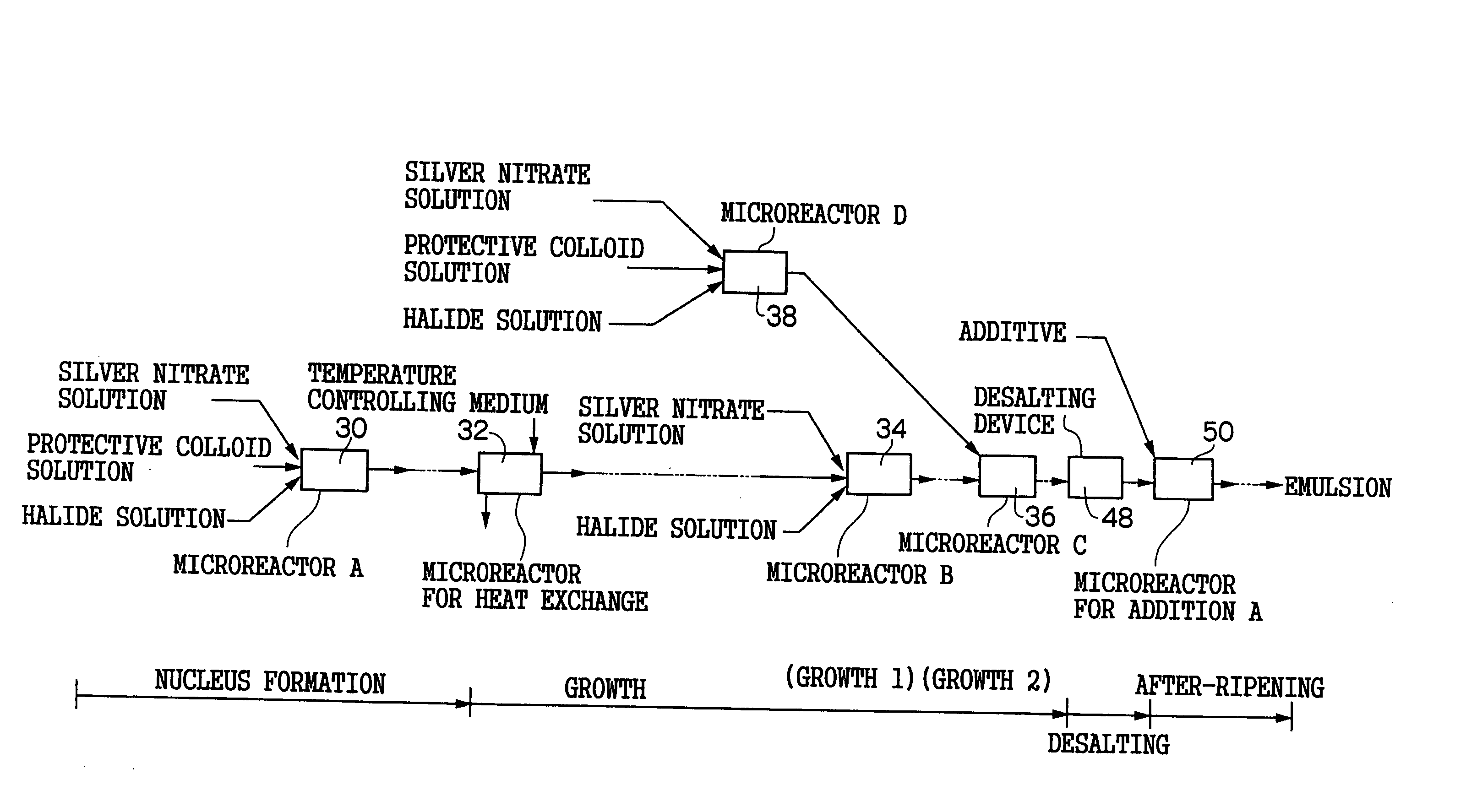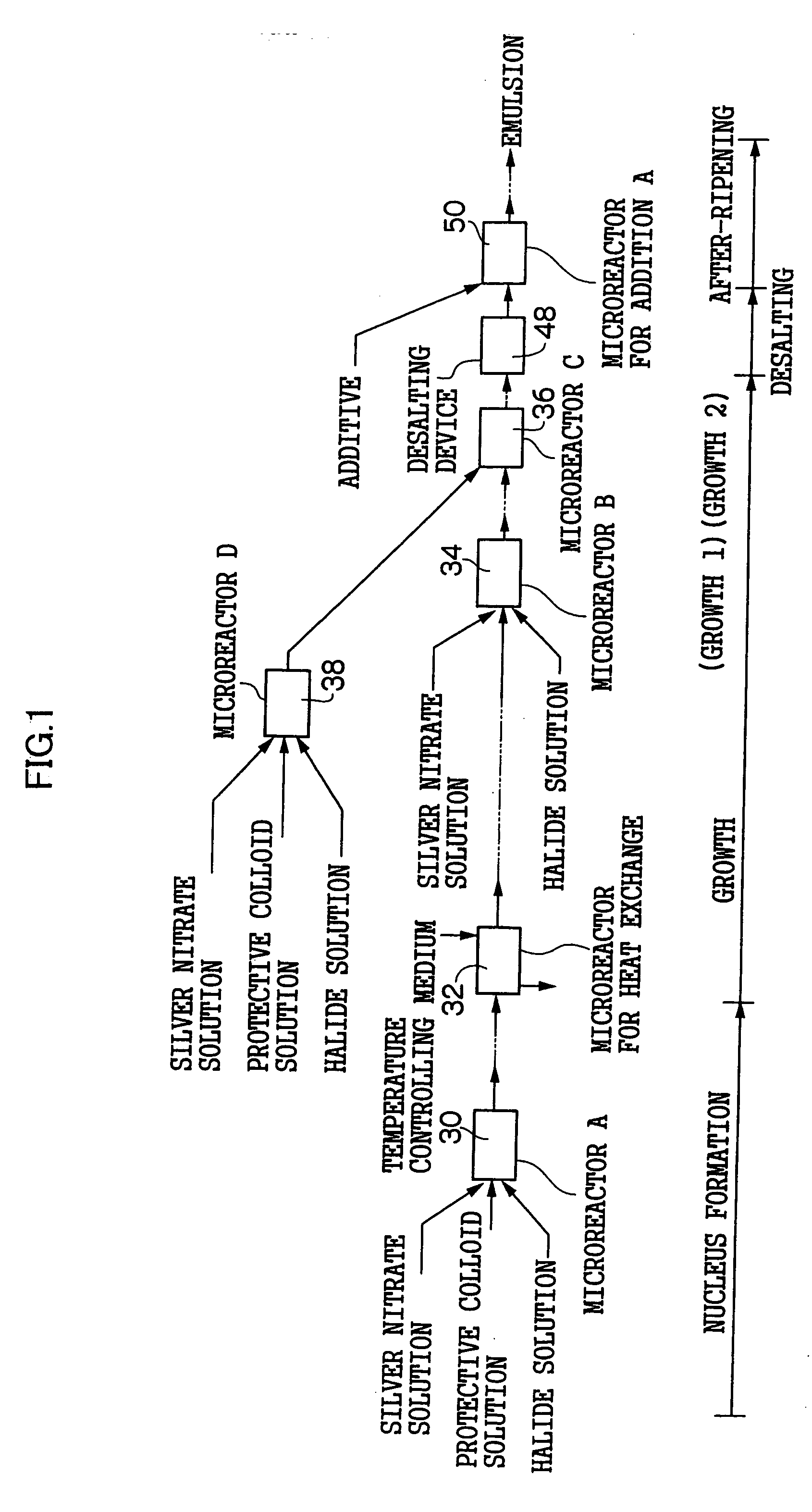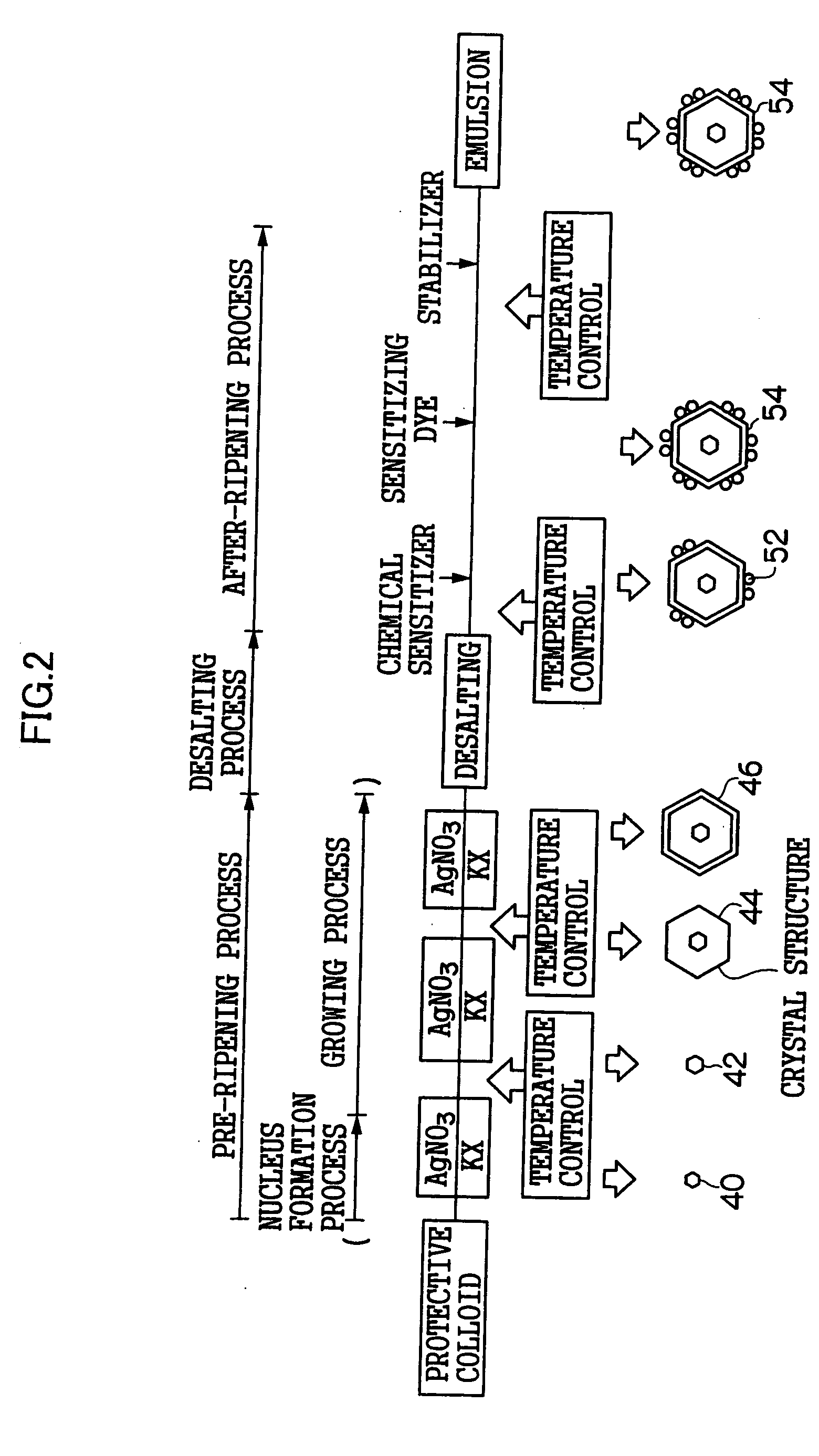Production method of silver halide photographic emulsion and production apparatus thereof
a silver halide and photographic emulsion technology, applied in the direction of gas-gas reaction process, photosensitive materials, instruments, etc., can solve the problems of non-uniform chemical reaction, inability to change the preparation scale, and change the characteristics of the emulsion, so as to achieve easy scaling
- Summary
- Abstract
- Description
- Claims
- Application Information
AI Technical Summary
Benefits of technology
Problems solved by technology
Method used
Image
Examples
third embodiment
[0245]FIG. 6 is a schematic view of a nucleus forming reaction microreactor 60 for performing a nucleus forming process in the grain formation of a silver halide emulsion in a pre-ripening process in a production apparatus of silver halide photographic emulsion of the invention and a nucleus growth reaction controlling microreactor 62 (corresponding to the process of the microreactor A30 of FIG. 1).
[0246] The pair of the nucleus forming reaction microreactor 60 and the nucleus growth reaction controlling microreactor 62 are designed such that a nucleus forming reaction and a grain growth reaction during the time of grain formation of silver halide photographic emulsion is separated as far as possible so that the nucleus forming reaction and the grain growth reaction do not simultaneously occur at the time of the formation of the silver halide grains, and after the nucleus grains of the silver halide emulsion formed by the nucleus forming reaction is stably taken out, the grain grow...
fourth embodiment
[0297]FIG. 9 is a schematic view exemplifying a structure in which a nucleus forming processing microreactor 72 and a mixer 74 are provided in a sidearm emulsion preparation for performing a nucleus forming process in the grain formation of a silver halide photographic emulsion in a pre-ripening process concerning a production apparatus of silver halide photographic emulsion of the invention.
[0298] As shown in FIG. 9, in the sidearm emulsion preparation, a tank 76 as a reaction container (may be a reaction tank for performing grain growth) is used. This tank 76 is constituted as a batch type reaction container device provided with an agitator capable of processing a fixed large quantity, for example, 1000 l (1 t) of liquid at a time.
[0299] An agitation vane 80 rotatively driven by a rotating driving force of a motor 78 is mounted in this tank 76 to agitate the solution filled in the inside of the tank.
[0300] Temperature control means 82 for heating or cooling the reaction solutio...
fifth embodiment
[0329]FIG. 10 is a schematic view of a nucleus forming reaction and physical ripening reaction microreactor 88 (corresponding to the process of the microreactor A30 and the heat exchanging microreactor A32 of FIG. 1) for performing a nucleus forming process in grain formation of a silver halide emulsion in a pre-ripening process concerning a production apparatus of silver halide photographic emulsion of the invention, and for starting a subsequent physical ripening process.
[0330] The nucleus forming reaction and physical ripening reaction microreactor 88 are constituted as a three-liquid mixing microreactor. Incidentally, it may be constituted as a two-liquid mixing microreactor.
[0331] Here, the nucleus forming reaction and physical ripening reaction microreactor 88 is formed such that a first flow passage for leading a silver salt solution (fluid 1), a second flow passage for leading a halide solution (fluid 2), and a third flow passage for leading water or an aqueous protective ...
PUM
| Property | Measurement | Unit |
|---|---|---|
| temperature | aaaaa | aaaaa |
| temperature | aaaaa | aaaaa |
| temperature | aaaaa | aaaaa |
Abstract
Description
Claims
Application Information
 Login to View More
Login to View More - R&D
- Intellectual Property
- Life Sciences
- Materials
- Tech Scout
- Unparalleled Data Quality
- Higher Quality Content
- 60% Fewer Hallucinations
Browse by: Latest US Patents, China's latest patents, Technical Efficacy Thesaurus, Application Domain, Technology Topic, Popular Technical Reports.
© 2025 PatSnap. All rights reserved.Legal|Privacy policy|Modern Slavery Act Transparency Statement|Sitemap|About US| Contact US: help@patsnap.com



